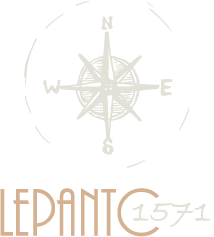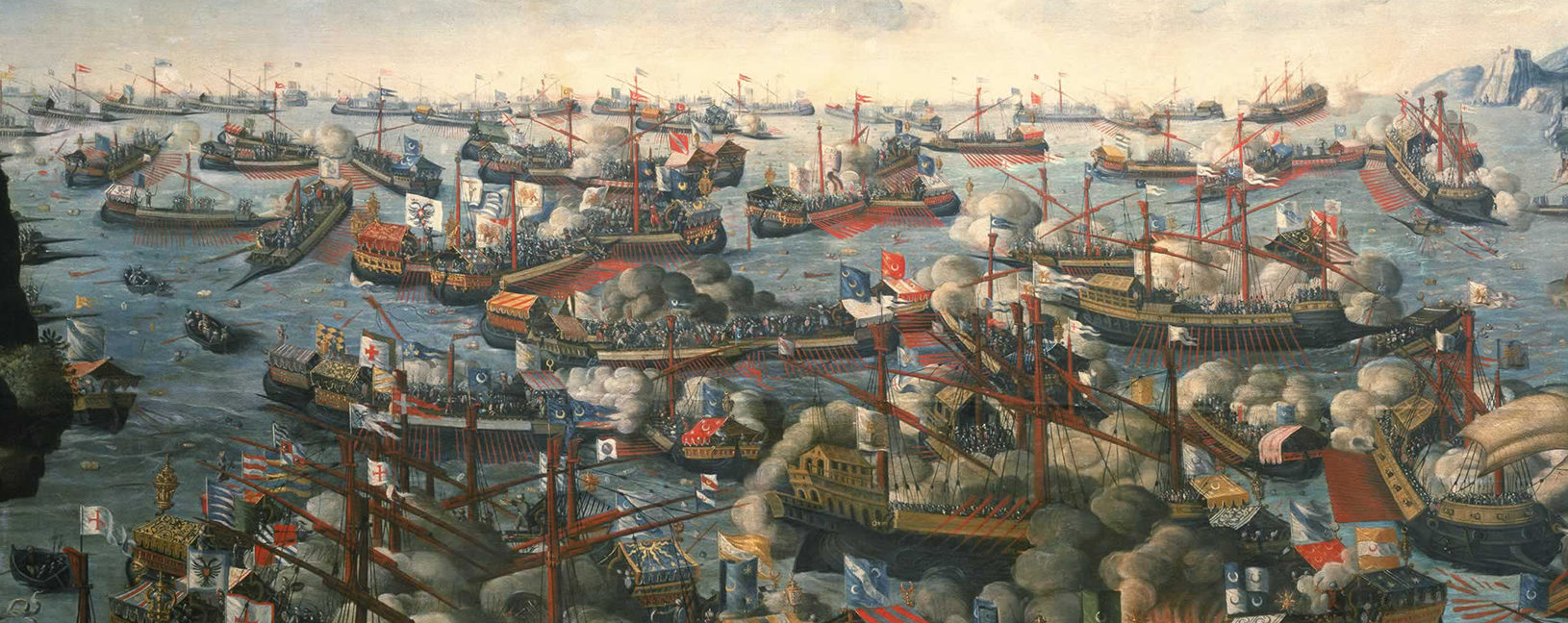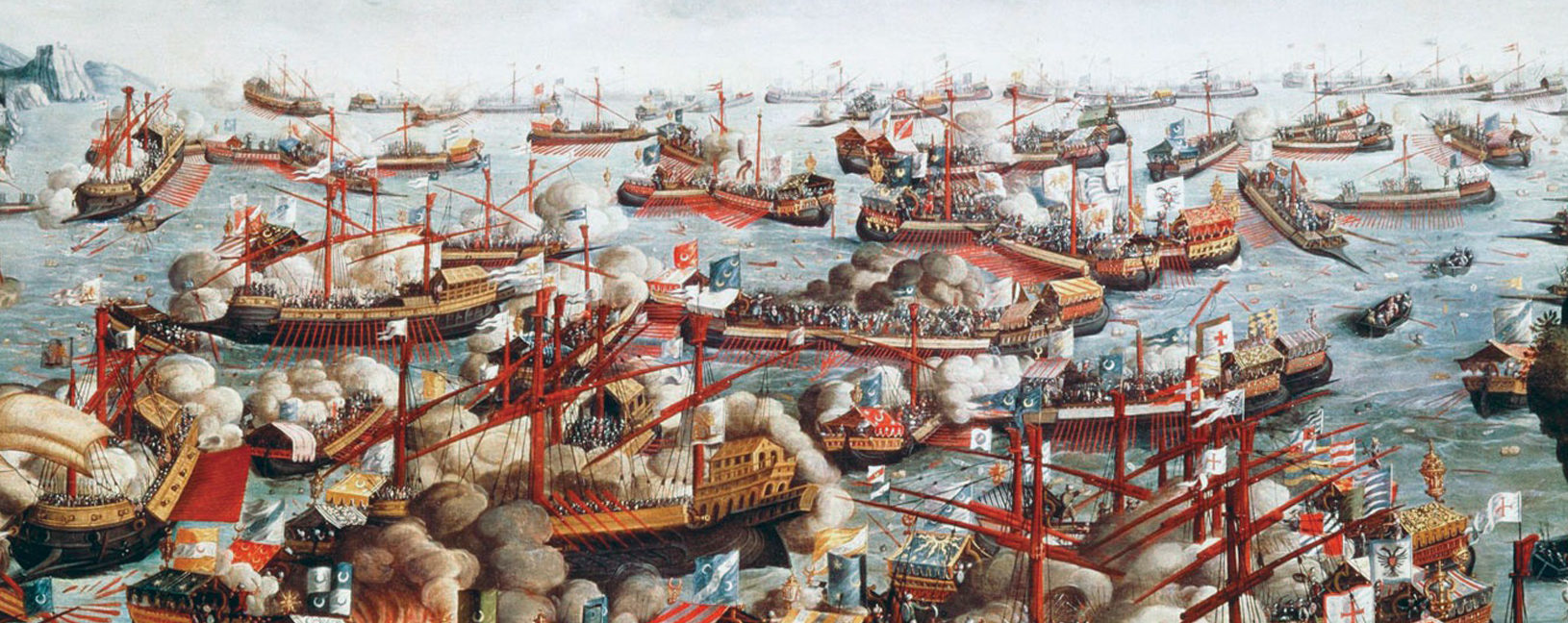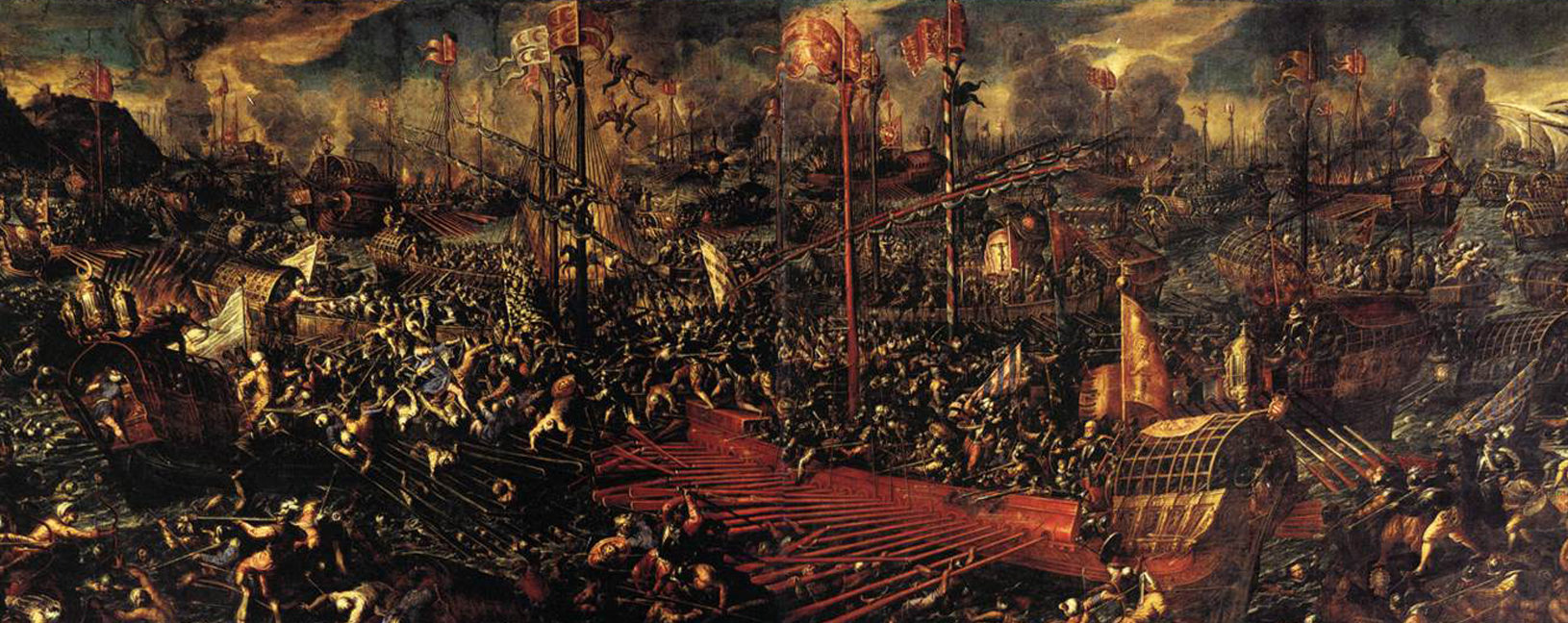Introduction
The naval battle of Lepanto is one of the most important events of the early Modern Period. At the opening of the Gulf of Patras, in front of the Curzolaris islets (called Echinades in Greek) took place a military event which, in the collective conscience of the Western world, reached the dimensions of a Crusade: it was the last, probably, great clash between the (Catholic) Christian West and Islam. The naval battle became a landmark for a series of events and factors.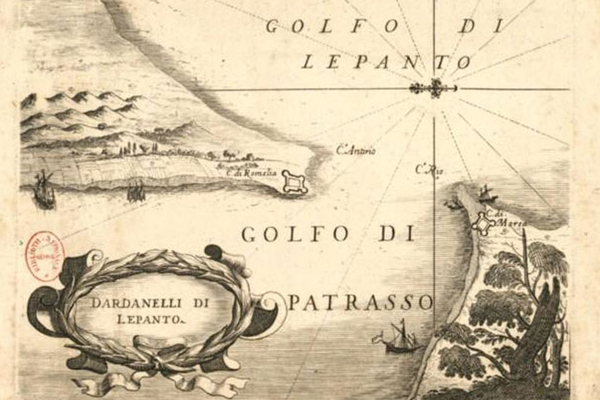
First of all it signified the end of the Ottoman Empire's aspirations to absolute control over the Mediterranean and territorial expansion to Italy and the French and Spanish coasts. It also meant the beginning of the end of a heroic era, where the maritime prowess and the battle man to man counted more: the new large vessels in the fleets of the Holy League of the Western forces, the galleasses, proved their power while in battle due to their artillery and cannons and thereafter they became the war ships “par excellence”, indispensable in every fleet. However, although the battle was hailed as a symbolic victory, its real importance for historical evolution was of a rather minor importance: the Ottoman fleet was rebuilt in a very short time, proving that the Ottoman state still possessed the necessary funds to support a very powerful war machine; on the other hand the states which constituted the Holy League, namely Hapsburg Spain, Venice, Genoa, the state of the Knights of Malta, even the Papal State, tried, each one for one's own sake, to conclude peace treaties with the Ottomans, in order to avoid repercussions on the trade activity and all sorts of economic transactions. In the centuries to come the factor “economy” would be more powerful than the factor “ideology”, and this tendency became evident for the first time in the post-Lepanto period -and lasts until today.
The Municipality of Nafpaktia wished to stress the importance of the naval Battle of Lepanto (Nafpaktos in Greek) with a specially-made Internet site, in order to present in a comprehensice and non-unilateral way the events, the protagonists and the significance of the battle. For the first time an attempt is being made to write history not only from the victors' side, but rather to trigger a deeper understanding of the military event within the complexity of its own era. Therefore, the authors exploited not only Western, but also Ottoman sources and the modern Turkish bibliography on this subject. Furthermore, one of the main aims was to urge younger generations to imbue in this historical event and therefore two applications were created: the 3D interactive educational presentation of two ships, the Venetian and the Ottoman galley, in order to locate their differences and similarities, and a historical game, imitation of a board game, which requires familiarization with the site texts and acquisition of historical knowledge. Simultaneously, interactive maps and texts allow the visitor of the site to virtual “sightsee” Nafpaktos and its region, thus learning more about its history and physiognomy. Thus, the Naval Battle of Lepanto is getting “in context” within the history of Nafpaktos and at the same time Nafpaktos and its history are depicted as the “theater” of the naval battle. In this way a tribute is paid to the methodolocical approach of history by Fernand Braudel, who first discerned the importance of the second half of the 16th century for the Mediterranean, presenting the events of the reign of Philip II of Spain projected on the human geography of the Mediterranean region in an unique way.
